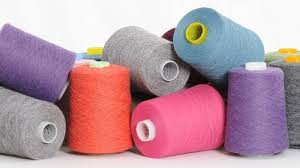Global textile yarn market expected to be worth $23.51 billion by 2030: Study
The textile yarn market, a vital cog in the global textile industry, is expected to be worth $23.51 billion by 2030. Steady rise in demand for textiles across various applications is one of the major catalyst; growth is pegged at a healthy CAGR of 6.27 per cent, says a Virtue Market Research in 2023 study.
Resilience in the face of challenges
The yarn market has proven its resilience. The pandemic disrupted supply chains and caused demand fluctuations. Lockdowns forced temporary closures of textile manufacturing units, leading to production and shipment delays. However, as economies reopened and consumer spending rebound, the market is experiencing resurgence, driven by pent-up demand and the resumption of manufacturing activities.
Sustainability takes center stage
A key driver in the short term is the growing focus on sustainability and eco-friendly production practices. Consumers are increasingly environmentally conscious, demanding textiles made from sustainable materials and processes. This has led to the rise of eco-friendly yarns made from organic cotton, recycled fibers, and biodegradable materials. Manufacturers are actively investing in sustainable production technologies and certifications to meet this demand.
Technical Textiles: A lucrative opportunity
The growing demand for technical textiles in medical, hygiene, and protective applications presents a significant opportunity. The pandemic has highlighted the importance of technical textiles in healthcare and hygiene. This has driven demand for yarns used in the production of medical gowns, masks, and hygiene products. Manufacturers are expanding their production capacities and diversifying their product portfolios to capitalize on this trend.
Digitalization revolutionizes yarn manufacturing
Digitalization and automation are transforming yarn manufacturing processes. Technologies like artificial intelligence, the Internet of Things (IoT), and data analytics are being integrated into yarn spinning and processing equipment. This integration enhances efficiency, quality, and productivity. Automated yarn spinning machines enable faster production rates and higher yarn consistency, reducing labor costs and minimizing errors. Additionally, digitalization allows for real-time monitoring of production processes, predictive maintenance, and optimization of production schedules. Manufacturers are actively investing in smart textile machinery and digital solutions to stay competitive and meet the growing demand for high-quality yarns.
Chemical vs. plant-based yarns
Yarns are sourced from various materials, including chemical, plant, animal, and other sources. Chemical fibers, encompassing synthetic fibers like polyester, nylon, and acrylic, currently dominate the market. These fibers are widely used due to their versatility, durability, and cost-effectiveness. They can be easily produced in large quantities and engineered to meet specific performance requirements, making them suitable for a wide range of applications.
However, plant-based yarns, derived from natural fibers like cotton, hemp, flax, and bamboo, are experiencing fastest growth. These fibers are prized for their softness, breathability, and biodegradability, making them popular choices for eco-conscious consumers and sustainable textile production. With rising environmental awareness and the demand for eco-friendly textiles, the plant-based yarn segment is poised for continued growth.
Artificial vs. animal yarns
In types of yarn, artificial fibers, which include polyester, nylon, acrylic, and viscose, reign supreme. Their versatility, durability, and cost-effectiveness make them popular choices. These fibers can be engineered to mimic the properties of natural fibers while offering additional benefits such as resistance to wrinkles, moisture, and abrasion.
However, animal yarns, derived from natural fibers obtained from animals like sheep, goats, and silkworms, are growing in popularity. Wool, sourced from sheep, is known for its warmth, softness, and moisture-wicking properties, making it ideal for winter apparel and outdoor clothing. Silk, obtained from silkworm cocoons, is valued for its luxurious texture, sheen, and drapability, making it a sought-after material in high-end fashion and luxury textiles. With the increasing demand for natural and sustainable textiles, animal yarns are gaining significant traction in the textile yarn market.
A spectrum of applications
Textile yarns find diverse applications across various industries. Apparel, encompassing a wide range of clothing and fashion items, is the largest segment. Yarns used in apparel manufacturing include both natural and synthetic fibers, offering a variety of textures, colors, and performance properties. These yarns cater to the fashion preferences and functional needs of consumers.

The fastest-growing segment, however, is the industrial sector. Industrial applications of yarns include a wide range of technical textiles used in sectors like automotive, aerospace, construction, and healthcare. Industrial yarns are engineered to meet specific performance requirements such as strength, durability, heat resistance, and chemical resistance. They are used in applications such as tire cords, conveyor belts, ropes, hoses, filters, and medical textiles. With the growing demand for technical textiles in various industries, the industrial segment of the textile yarn market is experiencing.
